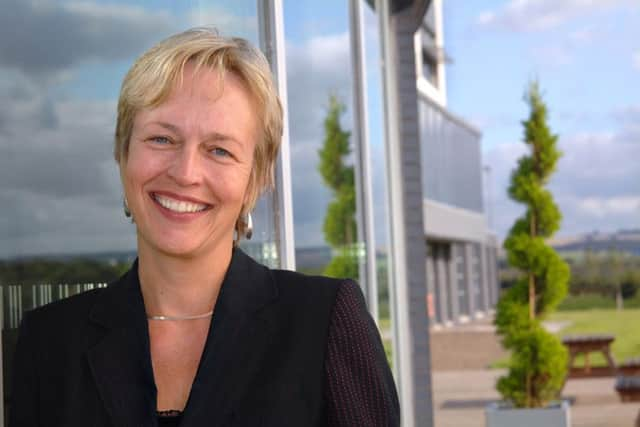Guarding against complacency is key to continued success of capital


There is no doubt that we should all be proud of what has been achieved already, but complacency would indeed be dangerous. So, like many others, I welcomed the opportunity to put forward positive ideas and share in the consultation experience to develop a vision for Edinburgh 2050 and how the city and its neighbours can grow and develop in a sustainable and focused way. The three pillars essential to support any plan for a more successful city are those that are core to Queen Margaret University’s own vision: innovation, sustainability and well-being.
Crucial to Edinburgh’s continued success will be ensuring that all aspects of the plan for the future don’t lose sight of the city’s key asset, its people. Their well-being is key to creating a vibrant and successful community, therefore any measurement of the city’s success must not focus solely on economic performance, and a raft of accolades, but rather on its overall health and happiness.
Advertisement
Hide AdAdvertisement
Hide AdThe relationship between improved well-being and enhanced sustainable economic growth has been thoroughly examined and the beneficial side-effects of well-being in terms of reduced costs to the health service and days lost through ill-health are widely accepted.


Whatever the relationship with the European Union, Edinburgh remains a highly successful European city. In preparing a vision for 2050 we should ensure that lessons are learned from other successful European cities.
Stockholm is said to lead the world in terms of freedom of expression. It is considered a “smart” city and trades on the reputation as a “connected city”. Stockholm 2040 is a vision that is backed by a clear and succinct plan. It centres on a clearly articulated common goal of “A Stockholm for Everyone” which guides and motivates every strand of activity leading towards its future achievements. Graz in Austria, like Edinburgh, is a World Heritage city and part of the Creative Cities network. It ranks in the top ten and is also considered to be “a city of innovation”.
Another inspiring city is Aalborg in Denmark, already twinned with Edinburgh and the happiest city in Europe according to the European Commission’s Quality of Life report. Aspiring to be similarly regarded by its citizenry would be a laudable aim of the Edinburgh 2050 vision. There are currently no Scottish cities in the Quality of Life Report’s top 20. Why shouldn’t Edinburgh aim to top the ‘happiness’ chart?
Connecting people to the new opportunities created by having a clear vision for the future will require focussed effort. In harnessing existing talent, research capabilities, business and academic acumen to the 2050 wagon, success will only be sustained if no-one is left behind. No job is for life in today’s economy. Therefore it is important that Lifelong Learning is embedded in the 2050 Vision. The council, along with the voluntary sector, UK and Scottish government, development bodies, universities, and colleges must continue to work together to ensure we maximise potential for lifelong learning and to translate that innovative learning into ideas, policies and developments that enhance the city and improve health, cultural life, well-being and the economy.


When we moved to our new campus in 2007, Queen Margaret University set out a vision for the land adjacent to our campus, with innovation and well-being at its core. Seizing a unique opportunity to create a vibrant, working community that will serve generations to come, that vision is now taking shape in our plans for Edinburgh Innovation Park, which will bring together academic research and knowledge exchange with Scotland’s emerging and developing food and drink businesses.Monitoring happiness and well-being and seeking to actively improve and enhance both will be a primary driver and we hope to see that reflected also in Edinburgh 2050.
Professor Petra Wend, Principal, Queen Margaret University